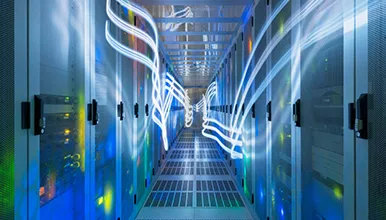In the rapidly evolving landscape of technology, the demand for faster, more reliable, and efficient data transmission has led to the widespread adoption of optical interconnect solutions. From the heart of massive data centres to the intricate systems of aerospace engineering, the versatile applications of fibre optic interconnect have become indispensable in connecting the world. In this blog post, we will delve into the diverse applications of optical interconnect, exploring its role in data centres, telecommunications, and the aerospace industry.
What is Optical Interconnect?
Table of Contents
Before we dive into specific applications, let’s understand the fundamentals of optical interconnects. Optical interconnects use light signals transmitted through fibre optic cables, unlike traditional copper-based connections. This technology offers several advantages, including high data transfer rates, low latency, and immunity to electromagnetic interference.
Data Centres: Powering the Digital Infrastructure
Data centres serve as the backbone of the digital age, managing the massive amounts of data generated and processed daily. Optical interconnect solutions connect servers, storage devices, and networking equipment within these facilities.
- High-Speed Data Transfer: Fibre optic interconnects enable data centres to achieve ultra-fast data transfer rates, essential for handling the ever-increasing volumes of information.
- Low Latency: In applications where milliseconds matter, such as financial transactions or real-time data analysis, the low latency of optical interconnects is crucial.
- Scalability: Optical interconnects provide scalability, allowing data centres to easily expand their infrastructure to meet growing demands without sacrificing performance.
Telecommunications: Bridging the Communication Gap
The telecommunications industry relies heavily on robust and efficient connectivity solutions. Optical interconnects have become the go-to choice for enabling high-speed communication over long distances.*
- Long-Haul Communication: Fibre optic interconnects support long-distance communication with minimal signal degradation, making them ideal for connecting telecommunication networks across cities and countries.
- Broadband Internet: The backbone of the Internet relies on optical interconnects to ensure high-speed and reliable broadband connections, facilitating the seamless exchange of data between users worldwide.
Aerospace Engineering
- In the aerospace industry, where reliability and weight are critical factors, optical interconnects transform how systems communicate within aircraft and spacecraft.
- Weight Efficiency: Traditional copper cables can be heavy, posing challenges in aerospace applications where weight is critical. Optical interconnects offer a lightweight alternative, contributing to fuel efficiency and overall performance.
- Harsh Environment Resilience: Aerospace environments can be harsh, with factors like extreme temperatures and vibrations. Optical interconnects, being immune to electromagnetic interference and less susceptible to environmental conditions, ensure reliable communication in these challenging settings.
- Avionics Systems: Fibre optic interconnects are employed in avionics systems for data transmission between various components, such as flight control systems, communication systems, and navigation equipment.
Emerging Technologies and Future Trends:
As technology continues to advance, new applications and trends are shaping the landscape of optical interconnect solutions.
5G Networks
The deployment of 5G networks requires high-speed and low-latency connections, driving the adoption of optical interconnects in telecommunications infrastructure.
Internet of Things (IoT)
The proliferation of IoT devices demands efficient communication channels, and optical interconnects offer a reliable and scalable solution for connecting the vast network of interconnected devices.
Quantum Computing
As quantum computing evolves, the need for high-speed and secure data transfer becomes paramount. Optical interconnects are poised to play a crucial role in the quantum computing ecosystem.
Challenges and Future Innovations
While optical interconnects have revolutionised connectivity, challenges still exist, and ongoing innovations aim to address these issues.
- Cost: Initial setup costs for optical interconnect infrastructure can be higher than traditional solutions, but prices are expected to decrease as technology matures.
- Interoperability: Ensuring interoperability between different optical interconnect solutions and legacy systems remains a challenge but is an area of active research and development.
- Power Consumption: Advancements in energy-efficient optical components are underway to address concerns related to the power consumption of optical interconnect solutions.
Optical interconnect solutions have become a cornerstone of modern connectivity, from powering the data centres that drive our digital world to connecting avionics systems in the aerospace industry. As technology continues to advance, these solutions will play a pivotal role in shaping the future of communication, enabling faster, more reliable, and efficient data transfer across diverse applications. As challenges are addressed, and innovations continue to unfold, the journey of optical interconnects promises to be exciting, with implications reaching far beyond the horizons of today’s technological landscape.


